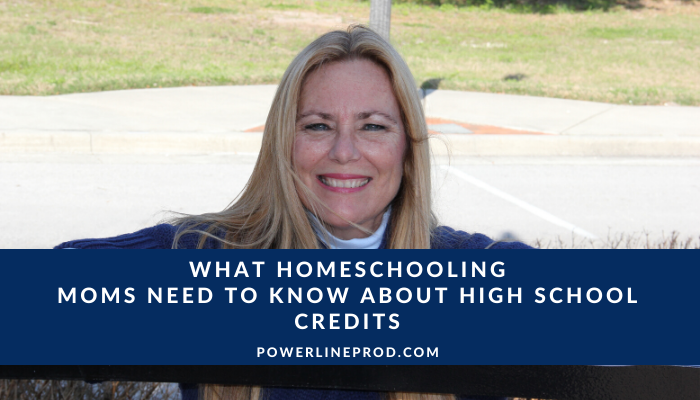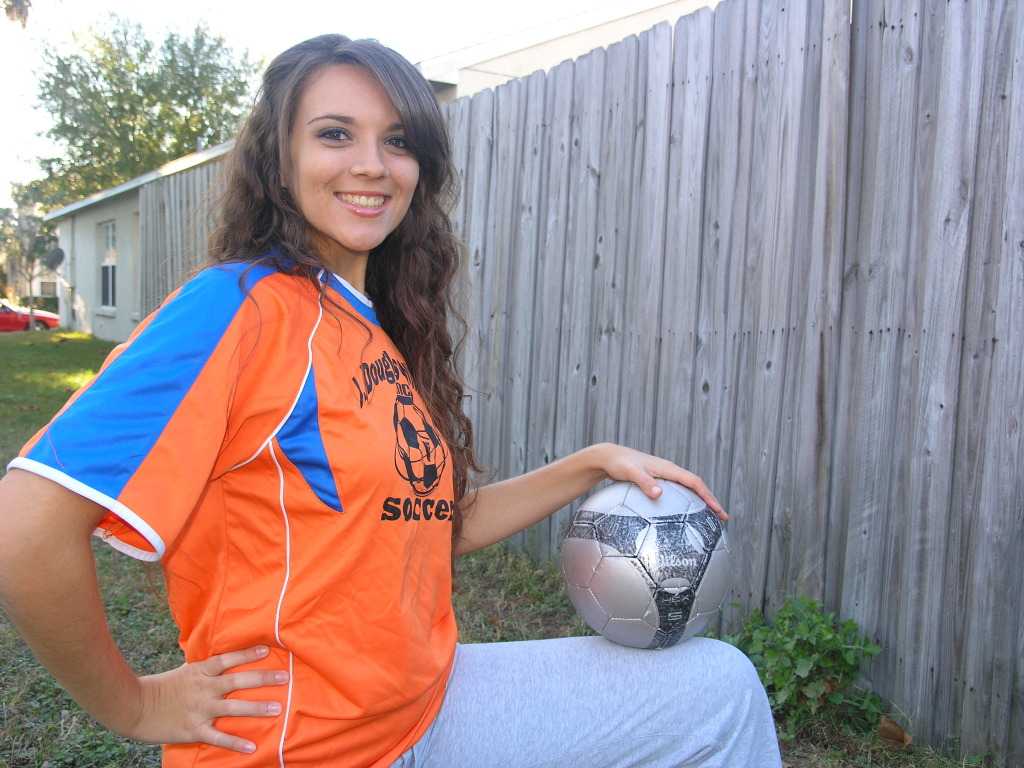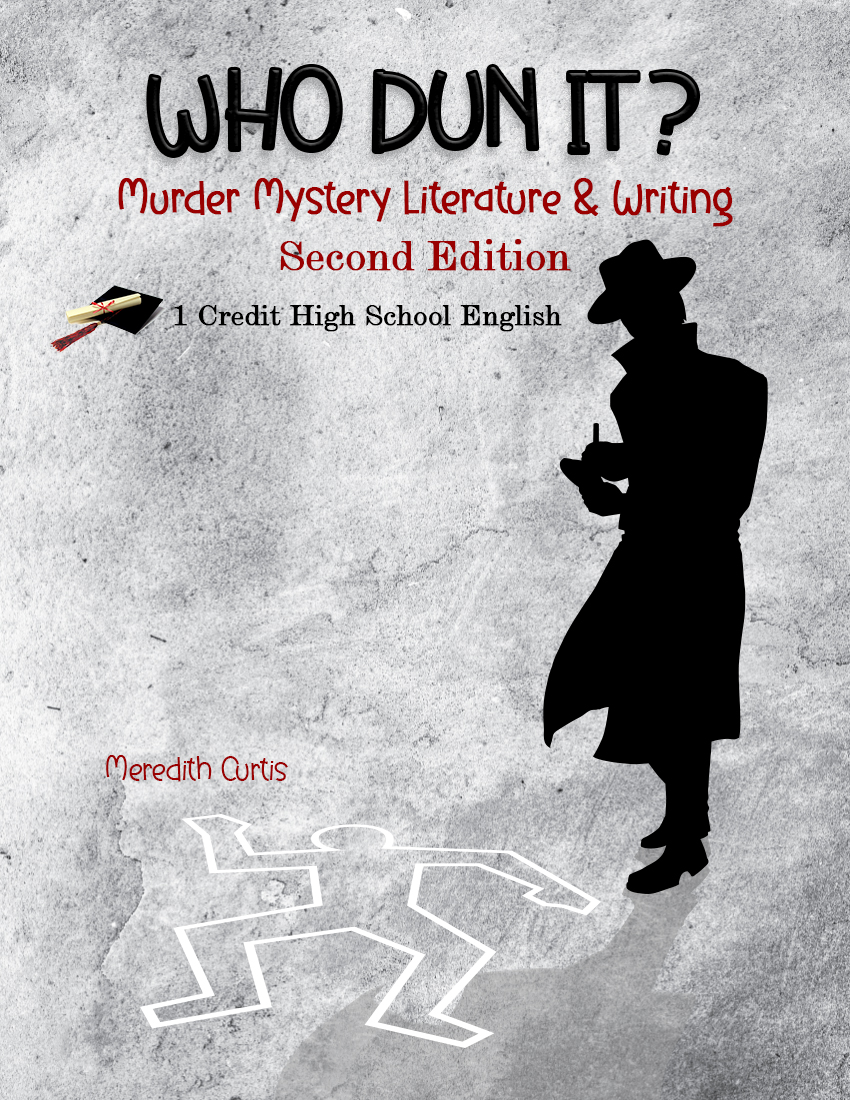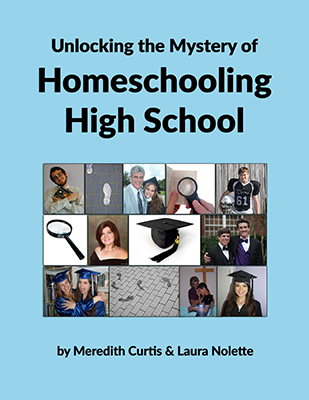When I started thinking about homeschooling in high school, I wanted to enjoy the same kind of freedom and creativity we had enjoyed up to that point. But then I had to make transcripts and my children had to apply to college. I felt a little overwhelmed. With some help from friends who had gone before, I relaxed and designed our own high school courses.
My philosophy is to keep things as simple and happy as possible. I want life to be enjoyable for the children and for me. Learning is fun! Even in high school.
What fun it has been to design my children’s high school classes! It has been one of the greatest joys of homeschooling for me because I love planning, learning, and planning to learn.
At this point, let’s assume you have an overall high school plan and you understand high school credits. (If not, read “What Homeschool Moms Need to Know About High School Credits” and “The Easiest Way to Create a Five-Year Plan to Homeschool High School“)

Start With Your Goal
Let’s start with your goal. Why do you or your teen want to study this subject? No matter what your purpose is, make the most of each class. Enjoy learning and make sure the material and assignments make learning the subject fun.
Jenny Rose had an interest in songwriting. I wanted to help her to grow as a songwriter and help her to grow in other musical and vocal areas that would impact her songwriting. I designed courses just for her that she loved!
When you are planning a course, ask yourself, “What is your purpose of this course?” Is it general knowledge like Math or Biology? Is it exploring an area of interest like Ancient History, British Literature, or Oceanography? Is it cultivating a gifting like Watercolor or Songwriting? Is it preparing for a career like Anatomy and Physiology or Economics? Is it to fulfill a college admission requirement?” Keep the answers to this in mind so that your course includes what is needed to fulfill your goals.
Julianna came to me right before her senior year and asked me to design a class that would improve her writing so that she could be successful in college. While she was a good writer, she did not enjoy it, but she was motivated with a goal to grow in certain areas of writing. We designed the course together.

Ingredients Of A Course
Ingredients of a course include:
- textbook or main living book (or DVD teaching series)
- supplemental living books, audios, DVDs, and materials
- written and oral assignments
- practical assignments that teach life skills
- requirements for final grade
Classes can be simple or complex, depending on what you want your child to learn and what he wants to study. The best way to explain how to design a class is to show you! Let’s start with something simple.

A math class is pretty simple to design. A math textbook, math tests, and sometimes lectures or videos comprise a simple math class. Let’s look at Algebra II.
Algebra II (1.0 credit)
Textbook: Saxon Algebra II
Supplemental books and materials: The Algebra 2 Tutor Video course
Assignments: Complete one lesson a day.Take corresponding test once a week. Watch one video segment a week.
Grading: For an C grade, complete all work, watch all videos, and test grades above 70%. For a B grade, complete all work neatly, showing how you did the problem, watch all video segments, and test grades above 80%. For a C grade, complete all work neatly, show all problem solving work, watch all video segments, and test grades above 90%.
Create A Literature Course Using Living Books
Now let’s get a little more complicated. You are going to teach a literature class and you’re not sure what to cover. You want him to read the classics, but your son wants to read mysteries.
What should you do?
One of your options would be to design a class based on classic mysteries. Your son could read a classic mystery and another book by the same author each month. You also want him to do some writing, but he hates writing and reading. You are trying to think of some way to make this class more fun, but don’t want to compromise. You notice that your son spends hours on social media or on a blog site blogging. Ah, you will have him write book review to post online. You will call it blogging, but require correct grammar and spelling.
Mystery Literature Class (0.5 credit)
Books to read:
A Father Brown Mystery & Orthodoxy & The Man Who Was Thursday: A Nightmare by GK Chesterton.
The Tell-Tale Heart (short story) by Edgar Allan Poe.
The Hound of the Baskervilles & The Adventures of Sherlock Holmes (collection of short stories) by Sir Arthur Conan Doyle
Whose Body? (A Lord Peter Wimsey Mystery) & The Lost Tools of Learning (an essay) by Dorothy L. Sayers
Mysterious Affair at Styles & And Then There Were None by Agatha Christie
A Man Lay Dead & Hand in Glove by Nagio Marsh
The Roman Hat Mystery & Halfway House by “Ellery Queen”
David Copperfield by Charles Dickens (this is a stretch, but it is a good way to get in this classic read!)
The Red House Mystery by A.A. Milne (author of Winnie the Pooh)
Blogging Assignments: Book Review on each book read (post on personal blog), three part blog on history of the mystery novel, discuss each book with mom at Starbucks (Monday nights)
Grading: For a C grade, read assigned books, discuss books with mom, and do adequate job on blog. For a B grade, read assigned books plus two extra of your choice, discuss books intelligently with mom, and write an interesting blog. For an A grade, read assigned books plus five extra, discuss books intelligently and enthusiastically with Mom, and do an excellent job blogging so that your blogs are re-posted on other sites.
I created a similar course for my Jenny Rose, but instead of blogging, it was fiction writing. She wrote a novel and a short story. We created characters, sprinkled clues red herrings, and learned the basics of an exciting plot. You can purchase Who Dun It: Murder Mystery & Writing for your own home school.
Create An American History Course Using Textbook
Let’s create an American history course together. What if you have several children of various ages and you want them to all learn history together, but you are concerned about the older children learning enough. Instead of creating a unit study, you decide to use Notgrass’s curriculum and do one hands-on learning project a week from arts/crafts to creating a radio show.
Textbook/Main book: Exploring America by Ray Notgrass along with additional literature assignments and original document readings.
Assignments: Complete assigned reading in textbook and answer questions. Take exams. Participate in history hands-on fun with the entire family. Complete all family history projects. Write an essay on the American Revolution. You will choose a topic with Mom.
Grading: For a C grade, complete all work, average test grade 70% – 80%. For a B grade, complete all work with excellence, work cheerfully with siblings, average test grade 80% – 90%. For an A grade, complete all work with excellence, work cheerfully with siblings, average test grade 80% – 90%. In addition, show initiative in doing some extra research on topics that interest you.

Are you ready for something a little more complicated? How about an Economics class?
Create an Economics Course
Economics, Business, & Personal Financial Management (1.0 credit)
Textbook/Main book: Economics in One Easy Lesson by Henry Hazlitt
Supplemental Books:
Whatever Happened to Penny Candy by Richard J Maybury
The Money Mystery by Richard J Maybury
The Clipper Ship Strategy by Richard J Maybury
Uncle Eric Talks about Personal, Career, and Financial Security by Richard J Maybury
Business by the Book by Larry Burkett
How to Manage your Money Workbook by Larry Burkett
Money Life Basics Series by Crown Ministries
Communist Manifesto by Karl Marx
Assignments:
- Read all books and fill out a book review sheet
- Participate in weekly group discussions about books read and course itself with mom and older sister
- Complete money workbook, including making a budget. Compare budget with family’s real budget
- Make a complete business plan and operate own business for at least three months.
- Present your business plan as a formal presentation to family and a group of friends.
- Make a Scripture book for little children about money and Biblical principles.
- Write a paper defining capitalism (free market), socialism, and mixed economy. What is America’s market?
- After reading Communist Manifesto, write a paper explaining how and why socialism requires atheism to work. How could socialism creep into a capitalistic nation?
Grading: For a C grade, complete all work adequately. For a B grade, complete all work with excellence. For an A grade, complete all work with excellence and show initiative in applying the things you are learning to your own life!
I created an economics course using all these ideas and more. You are welcome to purchase it. Economics, Finances, and Business is my best-selling high school course.

Don’t Forget Worldview
Just one final word about teaching our children in high school. The public school system is indoctrinating America’s children in humanism, socialism, and evolution. Make sure that you do not fall into the trap of teaching your teenagers what the public school system is teaching.
Look for Christian, or at least conservative, books and materials that teach from a Biblical worldview. Teach the Word of God with every subject and let His truth be the standard of what is good and bad. Do not be swayed by the world and protect you teenagers from the evil one. These words that Paul said to Timothy apply to us homeschooling parents today in 2012!
“Timothy, guard what has been entrusted to your care. Turn away from godless chatter and the opposing ideas of what is falsely called knowledge, which some have professed and in so doing have wandered from the faith,” (I Timothy 6:20-21 NIV).

You can purchase some of the classes that I have designed for my own children. Visit us at PowerineProd.
Looking for more help in the Homeschooling High School Adventure? We have a how-to-homeschool high school resource for you! Unlocking the Mystery of Homeschooling High School by Meredith Curtis and Laura Nolette will help you confidently homeschool your teenager.

Well, what do you think? Are you ready to try
this on your own?
God bless you as you create your own high school courses! God is good and
He will lead you in this adventure!
Until next time, Happy Homeschooling!
Meredith Curtis
